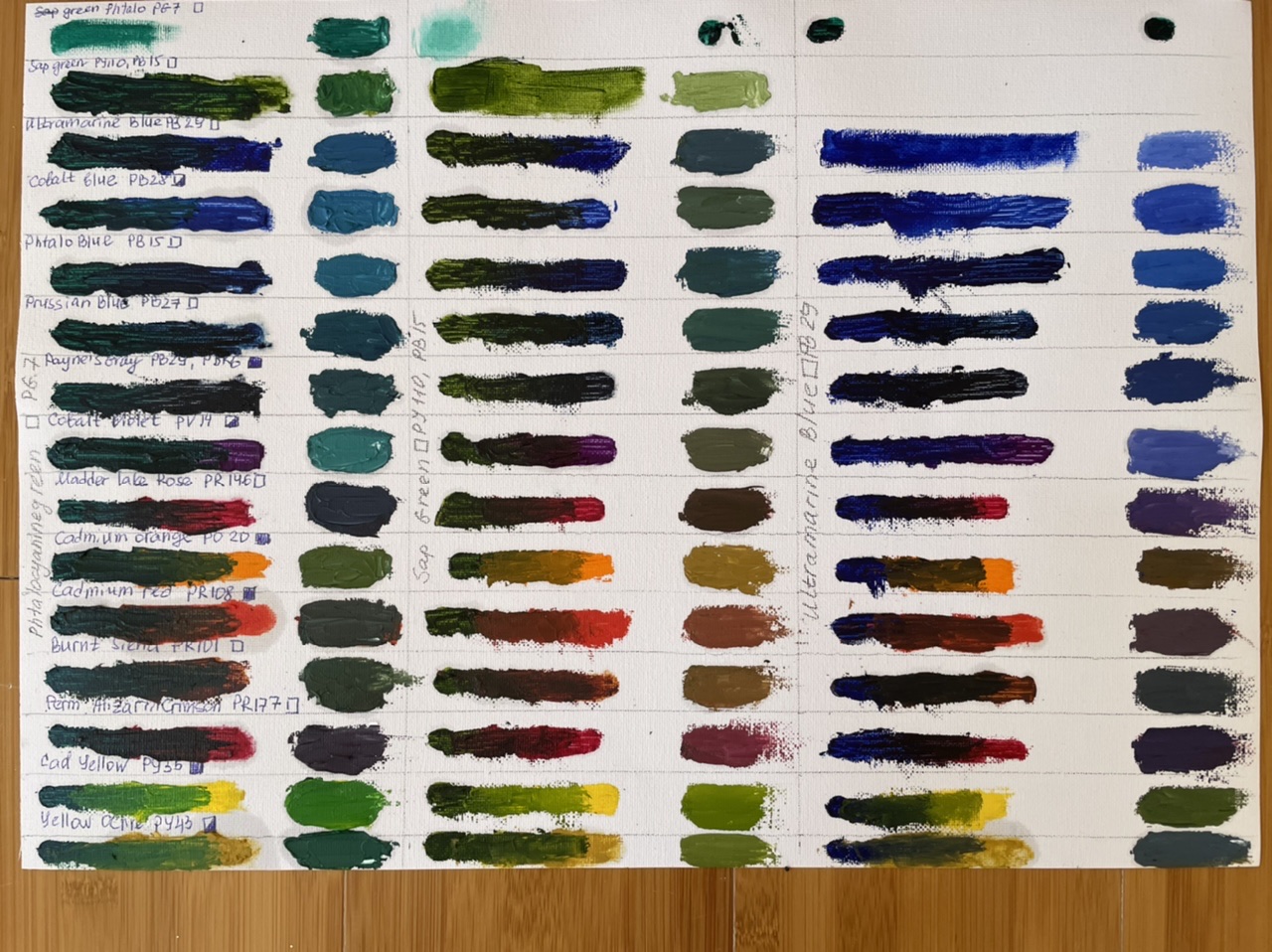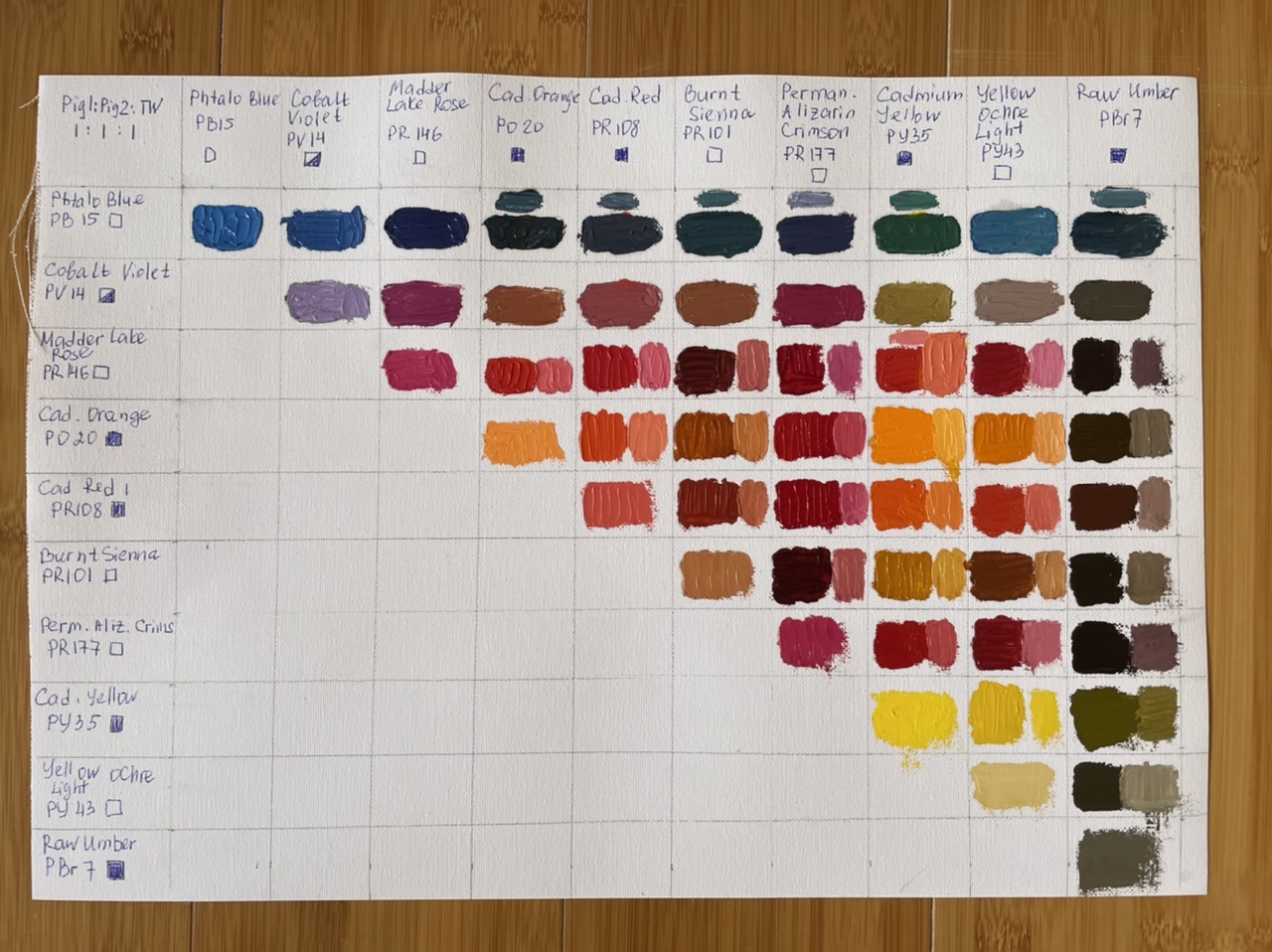Dear Community,
I would like to share my experience and findings of investigating my pallet via color mixing exercise that was (honestly saying) two years delayed.
When I had online course for landscape almost two years ago, instructor told us to do such kind of exercise (T.Zubova), but I did not do it then as I did not want to waste my precious paint.
Well, two years later after the class when I felt stuck with color I finally decided that I need to do this exercise and use it as catalogue of colors what My paints can do.
First discovery (even I had some expectations) blew my mind on what greens I can produce. Greens in landscape are usually the biggest challenge ever, now I know why exactly I cannot buy all the greens that I can meet in nature in the tube.
Second discovery was that destroyed my status-quo on color understanding was mixes of yellows and reds and what beauty was hiding from me inside my paint tubes. Now I am seriously thinking to try a floral painting again.
Let me please share what I did as I used two different approaches in the exercise.
1. Greens and Ultramarine.
I wanted to observe color transition between mixes when in the range. So I used a pallet knife to see color change as I mixed between left and right. Since these research colors were dark out of tube I also made a sample of equal quantities Color 1 x Color 2 x Titanium White. (proportion 1:1:1) This is where my discovery was hiding as it gave me full set of realistic greens for all possible applications.
2. Warm colors.
For warm colors I decided to omit the range mixing and just did Color 1 x Color 2. Then I thought let me add equal proportion of white to see what I get. The gentle pinks and oranges that I discovered with adding TW are just gorgeous.
The pure color which was used for mixes learning diagonal row is just a color of interest with TW to see how it behaves with addition of the white to it.
Another discovery was about strength of the pigments in mixes and I realized that yellow ochre is a weak pigment and to use it as yellow in landscapes I will need more of it and also it gives a wonderful sandy color.
Update from 2022: I got Viridian Green and Chrome Oxide colors and did the same exercise with them. Overall mixes showed me quite the same colors that I could achieve with my standard phtalo green as basis. Only couple of color combinations with the new greens showed difference. So I do not see the point for myself to use these new colors as mixing basis and rather to keep them for specialized use due to the price tag.
Practical application: this is the catalogue that I will look at when I need to color match something with reality if I paint something from nature still life or plein-air.
Although color mixes I usually do have more than mix of two colors this is a wonderful starting point to understand color mixing better.


I thoroughly enjoyed the process and I encourage everyone to try and share your discoveries with Community.
sunnylady
Quite an interesting article, never thought about such exercise.
I use a chart where about 22 most used mixes are shown and briefly explained. It still works for me although I don't use it regularly since I mostly mix by instinct.